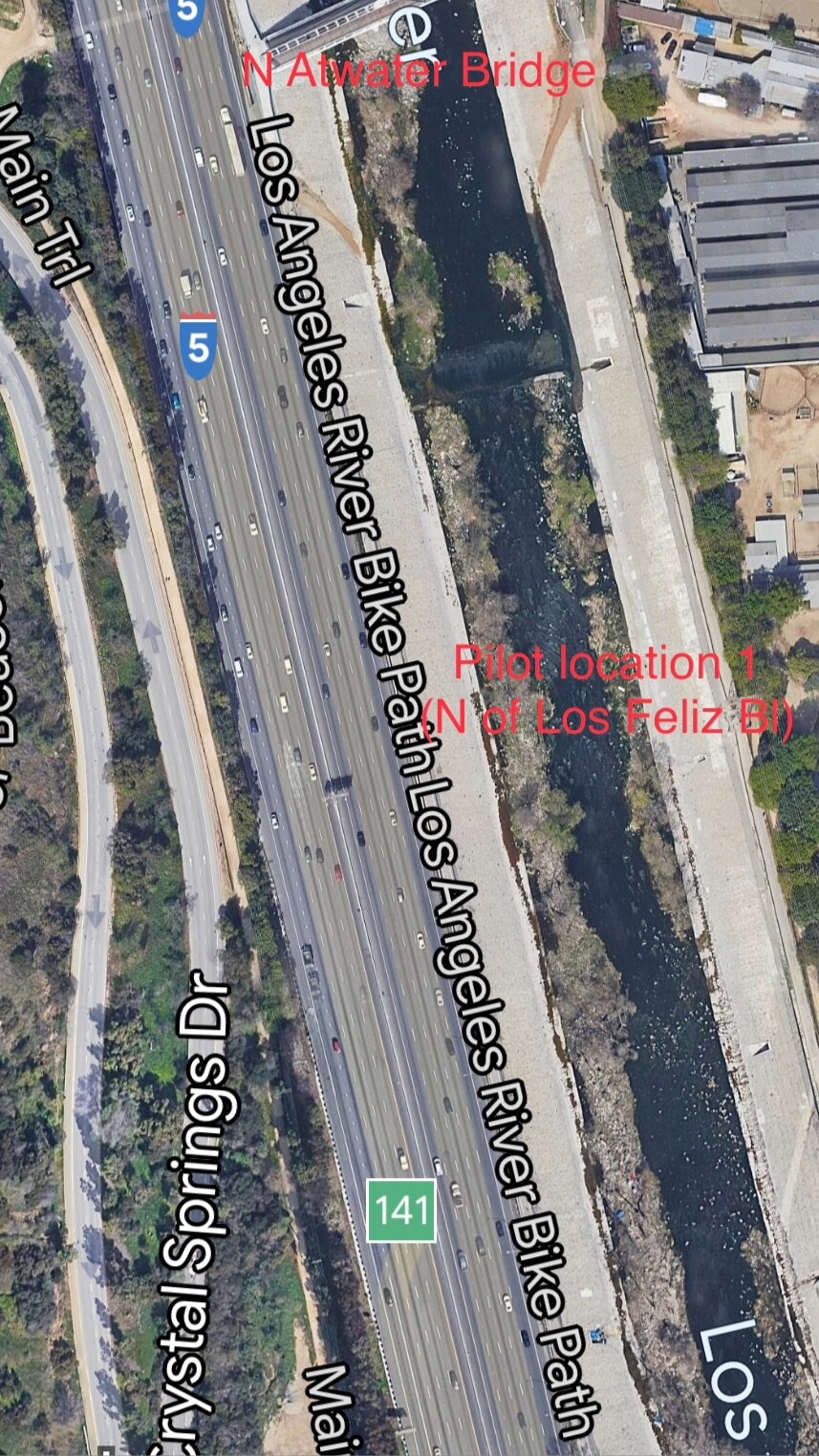Truth matters. Community matters. Your support makes both possible. LAist is one of the few places where news remains independent and free from political and corporate influence. Stand up for truth and for LAist. Make your year-end tax-deductible gift now.
Atwater Village Got Money For A 'Mulch' Wall, But There's Still A Long Way To Go Before It's Built

Atwater Village recently secured $2.5 million from the state budget for the construction of a “living sound wall.” Also known as a “mulch wall” — a type of freeway sound barrier made from ... mulch.
Hold on, what?
Instead of concrete, these walls are stuffed with dead plant matter. Proponents say they are more cost effective than regular old concrete walls and just as effective at blocking out sounds.
Their construction also produces less carbon pollution. Plus, there’s the cosmetic benefit of adding more green to areas that desperately need it, like a bike path between a freeway and the LA River, which is where the proposed Atwater Village project is intended to be constructed.
The backstory
Los Angeles has a bit of a history with using cinder block soundwalls to reduce noise pollution along freeways.
But our city's relationship with mulch walls has been much shorter. About a decade ago, a 600-foot long and 12-foot-by-3-foot wide partition, aptly termed the “Great Wall of Mulch” was built and funded by the City of Long Beach.


The Atwater Village Neighborhood Council has been trying to put up its own version — between the 5 freeway and the L.A. River Bike Path near Los Feliz Blvd. — for just as long. Proposed to be nearly two miles long, it would be much longer than its Long Beach predecessor, which reportedly cost $150,000.
Recently, State Senator Anthony Portantino, who represents the community, took up the cause and secured $2.5 million in funding from the 2023-2024 State Budget.
The project has outlived the tenure of many members of the Atwater Village Neighborhood Council, but its River Committee — which does work on the parts of the LA River that run through their neighborhood — has held tight to the dream of one day having a miles-long mulch wall to beautify the bike path.
"I kept going with it and talked to different politicians and their staffs about it and made my presentation," said River Committee member Jim Muller. "Sen. Anthony Portantino loved the idea [and he] was able to get it done."
What's next

Securing the funding is just one step. In LA County, both LA Metro and the California Department of Transportation (Caltrans) are involved in the counstruction of freeway sound barriers.
For the Atwater project, "Caltrans would have to approve the design of the sound wall and ensure that it meets state and federal requirements to reduce freeway noise," says Patrick Chandler, a communications manager at LA Metro. "The freeway and adjacent landscape are owned by Caltrans."
But with a backlog of soundwalls — the non-mulchy kind — that still need to be built, it could be any number of years before a “living” one comes to Atwater Village.









